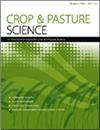Agronomic, phytochemical and drought tolerance evaluation of Iranian cannabis (Cannabis sativa L.) ecotypes under different soil moisture levels: a step towards identifying pharmaceutical and industrial populations
IF 1.9
4区 农林科学
Q2 AGRICULTURE, MULTIDISCIPLINARY
引用次数: 0
Abstract
ABSTRACT Context. Cannabis is a herbaceous annual plant that belongs to the Cannabaceae family, which is used in the production of fibre, paper, oil and pharmaceutical products. Aims. The aim of this study was to identify drought-tolerant ecotypes and medicinal and industrial populations. Methods. Due to the medicinal and industrial importance of cannabis, 12 cannabis ecotypes were collected from different regions of Iran. Then, their agronomic and phytochemical characteristics were evaluated under different soil moisture conditions. Key results. The soil moisture levels had significant effects (P < 0.01) on the studied traits except for the 1000 seed weight. Based on duration of the growth period, the Tabas and Dasht-e-Moghan ecotypes were identified as early and late maturing ecotypes, respectively. Also, the highest stem dry weight and stem height/diameter ratio and the lowest seed yield were related to the Dasht-e-Moghan ecotype, which is valuable for fibre production. Based on seed yield (relative reduction) and some tolerance indexes, the Tabas and Tabrize ecotypes were shown to be the most tolerant and sensitive ecotypes, respectively. As soil moisture decreased, tetrahydrocannabinol levels increased and cannabidiol levels decreased. The highest amount of tetrahydrocannabinol was related to the Qom ecotype at 50% soil moisture and the highest amount of cannabidiol was related to the Rasht ecotype at 100% soil moisture. Conclusions. Generally, these ecotypes had different responses to soil moisture. Some ecotypes were valuable in terms of the production of pharmaceutical metabolites and some in terms of fibre production. Implications. Tolerant and sensitive ecotypes might be considered in production and also breeding programs.不同土壤水分水平下伊朗大麻(cannabis sativa L.)生态型的农艺、植物化学和耐旱性评价:确定制药和工业种群的一个步骤
本文章由计算机程序翻译,如有差异,请以英文原文为准。
求助全文
约1分钟内获得全文
求助全文
来源期刊

Crop & Pasture Science
AGRICULTURE, MULTIDISCIPLINARY-
CiteScore
4.20
自引率
15.80%
发文量
111
审稿时长
3 months
期刊介绍:
Crop and Pasture Science (formerly known as Australian Journal of Agricultural Research) is an international journal publishing outcomes of strategic research in crop and pasture sciences and the sustainability of farming systems. The primary focus is broad-scale cereals, grain legumes, oilseeds and pastures. Articles are encouraged that advance understanding in plant-based agricultural systems through the use of well-defined and original aims designed to test a hypothesis, innovative and rigorous experimental design, and strong interpretation. The journal embraces experimental approaches from molecular level to whole systems, and the research must present novel findings and progress the science of agriculture.
Crop and Pasture Science is read by agricultural scientists and plant biologists, industry, administrators, policy-makers, and others with an interest in the challenges and opportunities facing world agricultural production.
Crop and Pasture Science is published with the endorsement of the Commonwealth Scientific and Industrial Research Organisation (CSIRO) and the Australian Academy of Science.
 求助内容:
求助内容: 应助结果提醒方式:
应助结果提醒方式:


